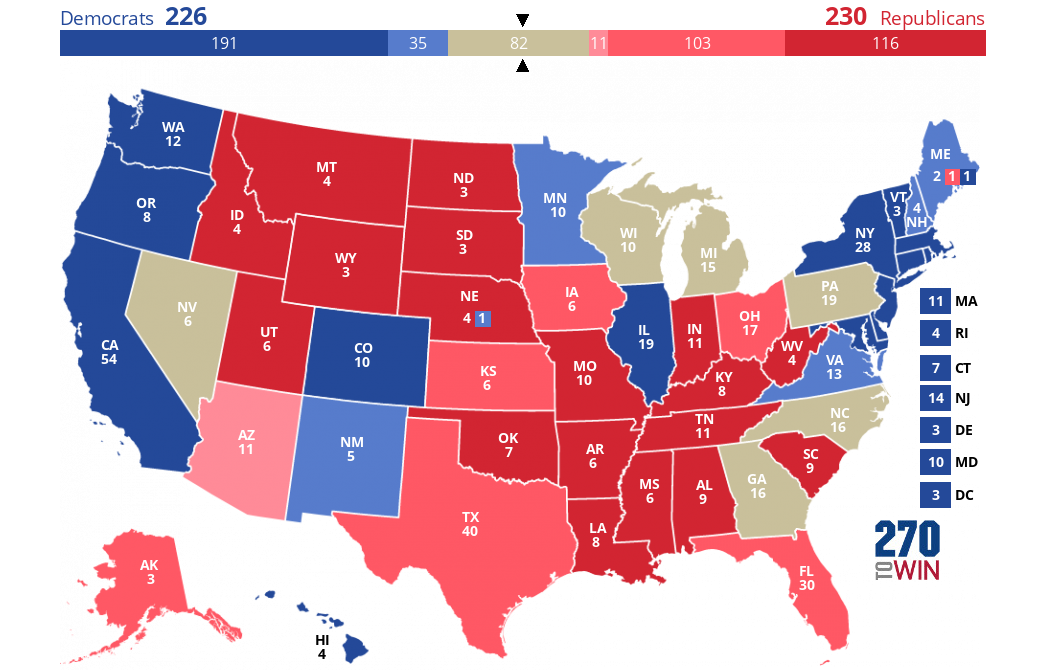1860 Presidential Election Interactive Map
152 electoral votes to win
Change history with the 1860 presidential election interactive map.
Update a state winner by clicking it to rotate through candidates. Alternately, select a candidate color in the Map Color Palette, then select states to apply. Use the edit button in the Palette to update candidate information.
Split electoral vote states - if any - are not interactive. Use the table below the map to make changes.
For full details, see the user guide.
Split Electoral Votes
States shown here did not allocate all their available electoral votes to one candidate. The historical split can be edited in this table. You can also use the drop down menu to split other states.
Removing the split () will set the state to undecided and make it interactive on the map.
| R | D | C | D | Total | Remove | ||||
|---|---|---|---|---|---|---|---|---|---|
1860 Actual Election Results
| Candidate | Party | Electoral Votes | Popular Votes | ||
|---|---|---|---|---|---|
| ✓ | Abraham Lincoln | Republican | 180 | 1,866,452 | |
| John C. Breckinridge | Democratic | 72 | 847,953 | ||
| John Bell | Constitutional Union | 39 | 592,906 | ||
| Stephen A. Douglas | Democratic | 12 | 1,382,713 |
1860 Election Facts
- Welcome: Minnesota and Oregon become states during this election cycle
- Original 13 states control fewer than 50% of total Electoral Votes for first time
- Lincoln received only about 40% of the popular vote in a divided nation on the brink of Civil War
- New Jersey: Douglas won the popular vote on a Fusion slate comprised of 3 of his electors and 2 each for Breckinridge and Bell. Apparently - the history is a bit murky - some voters received a ballot with seven Douglas electors, taking votes from the Breckinridge/Bell electors. Bottom line - the 3 Douglas electors on the Fusion slate received the most votes, while the most votes for the four remaining spots went to Lincoln's electors.
- Issues of the Day: Slavery (Dred Scott decision, Secession)


